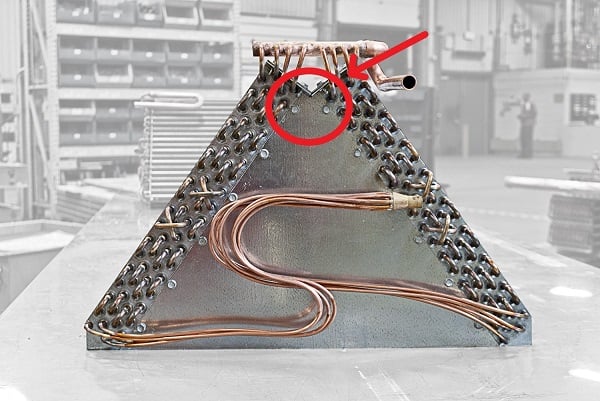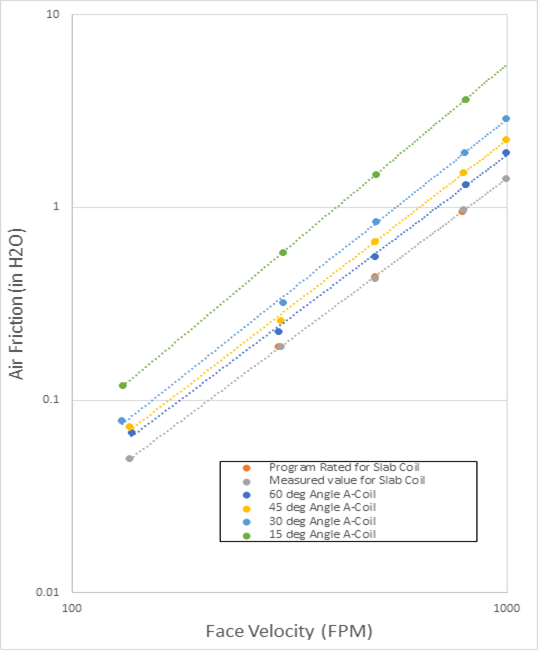Super Radiator Coils has completed the first in a series of airside performance tests designed to understand how changes in an A-frame coil’s angle impact air friction. This post will explain that research, including:
- Background
- Testing methodology
- Conclusion
- What’s next?
Background
The A-frame coil configuration is used to maximize the equipment’s heat transfer surface area without greatly increasing the size of its footprint. In this configuration, two coils are attached to form an A-shape (or multiple ‘As’). It’s a very common configuration, but detailed information on how this orientation impacts air friction is limited.

In a slab coil, a unidirectional airstream flows perpendicularly across the coil’s face. But with an A-frame design, the angle created by the configuration alters the airflow’s direction, adding complexity to airside performance calculations.
Testing Methodology
For these tests, the objective was to understand how the air friction changed with different A-frame angles. We tested two coils under dry-surface conditions:
- A-frame coil with copper tube and louvered aluminum fins
We manipulated the angle of the A-frame configuration of coil #1 to include the following angles:
- 15 degrees
- 30 degrees
- 45 degrees
- 60 degrees
- One slab coil with the same design
Both coils were tested at various face velocities using a draw-through configuration, with a fan positioned underneath the coils pulling air across the coils’ faces. The results of those tests can be seen in the graph below. For coil #2, the angle can be considered 180°.

Conclusion
We feel comfortable saying that these tests show a correlation between the angle of an A-frame coil and air friction. For the coil we tested, the results appear to indicate that air friction increased as the A-frame assembly’s angle was made more acute. More data must be gathered before any definitive conclusions can be drawn. We will conduct testing in this area in an attempt to further understand this subject.
What’s Next?
We will continue to post to Doctor’s Orders as we gather additional data. If you’re designing a system and considering an A-frame configuration for your heat exchangers, we’d be happy to discuss the results of our testing with you and its potential impact on your project. Or if you’re looking to take coil design, performance modeling, and manufacturing off your plate, give us a call. We’d love the opportunity to help you design just the right tool for the job.




